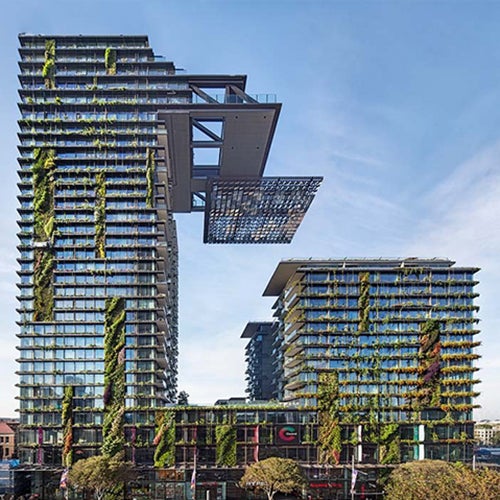
The CTBUH recognises 1 Bligh Street and One Central Park as among the world’s most influential tall buildings.
Two buildings in Australia are among those to have made the list of ‘50 Most Influential Tall Buildings of the Last 50 Years’, according to the Council on Tall Buildings and Urban Habitat (CTBUH).
1 Bligh Street (construction completed in 2011 by Grocon) and One Central Park (construction completed in 2014 by Watpac) were selected by the CTBUH as leading examples of tall buildings that represented a significant change in thinking or technique when they were constructed. The announcement of the list coincides with the 50th anniversary of the CTBUH, which was founded in 1969 to ‘embrace and interpret the rapid changes taking place in the field of high-rise design and engineering’.
1 Bligh Street, Sydney

1 Bligh Street in Sydney’s CBD was recognised for its use of sustainable structural materials. The structural and reinforcing steel used in the project was supplied by InfraBuild. Ninety per cent of the steel used in the structure has a recycled content of at least 50 per cent. Over 20 per cent of the aggregate used in concrete was also recycled material.
The building incorporates a high-performance double skin façade with external louvres and naturally ventilated atrium that contributes to its sustainable design. In addition to providing a generous public plaza at its base, due to its elliptical shape and deft space planning, 1 Bligh Street was the first commercial office tower in Sydney’s CBD to incorporate blackwater recycling, reducing the demand on municipal potable water by 90 per cent.
One Central Park, Sydney

Awarded multiple 5 Star Green Star ratings by the GBCA, One Central Park, near Sydney’s Central Station, set new standards in sustainable residential design with its use of hydroponics to grow plants all round the building. The plants’ shade reduces energy consumption for cooling and their leaves trap carbon dioxide.
The building features a striking heliostat and sky garden affixed to a structural steel frame cantilevered from the edge of level 29 that harvests sunlight all year round for heating and lighting. The innovative 110-tonne heliostat, suspended 100 metres above a residential development was constructed using conventional bridge technology with embedded steel trusses. Structural steel was supplied by InfraBuild to fabricator Samaras Steel for the project, with reinforcing steel also supplied by InfraBuild.
The sustainability of steel
Steel is widely recognised as the most recycled material in the world by weight. In Australia, well in excess of 90 per cent of the potential scrap steel pool is captured for reuse or recycling into new steel products. InfraBuild’s Electric Arc Furnaces utilise scrap steel from our metals recycling division. InfraBuild has four Environmental Product Declarations (EPDs) that comply with the requirements of a valid EPD recognised in the Green Star Design Rating Tool (GBCA) and the IS® Rating Tool (Infrastructure Sustainability Council of Australia).
InfraBuild congratulates both buildings for making the CTBUH’s prestigious list.
Click here for more about the ‘50 Most Influential Tall Buildings of the Last 50 Years’ list.
Main image courtesy CTBUH
Please contact us for any feedback or media enquiries about this content.
Subscribe to the
InfraBuild newsletter
Receive regular updates on news, case studies as well as the latest products and services.
